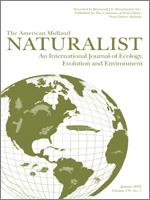Interactions among predators can have important consequences for lower trophic levels. Here, we use individual tag data on juvenile salmonids to quantify how their geographic, taxonomic, and life-history representation in the diets of great blue herons (Ardea herodias) changed after a pair of bald eagles (Haliaeetus leucocephalus) usurped the colony's nesting site, forcing the colony to relocate. Heron diet composition changed significantly despite the short relocation distance (4.1 km). This was driven by a shift in space use, as herons to a greater extent began consuming fish from a river basin farther away from the bald eagle nest. As a consequence the species composition in heron diets changed significantly, with the largest increase in coho (Oncorhynchus kisutch) and largest decrease in Chinook salmon (O. tshawytscha). The representation of Chinook life-history types in the diets also shifted. Fall Chinook was the numerically dominant life-history type in the diets but decreased relative to spring and summer Chinook following relocation, accounting for differences in availability. Expressed by rearing type (natural or hatchery-produced), the prevalence of natural-origin Chinook in the diets increased whereas hatchery-origin Chinook decreased. For steelhead rearing type there were no significant changes. Finally, herons increased their use of a nearby tributary watershed following the relocation. Notwithstanding the potential confounding factors inherent to natural experiments, our results demonstrated marked shifts in space use among herons in response to the relocation and continued presence of bald eagles, which in turn shifted their predation pressure to other salmonid species.
How to translate text using browser tools
1 January 2018
Shifts in Great Blue Heron Habitat use Following Nest Site Usurpation: Implications for Salmonids
Knut Marius Myrvold
ACCESS THE FULL ARTICLE
It is not available for individual sale.
This article is only available to subscribers.
It is not available for individual sale.
It is not available for individual sale.





